Results 7,871 to 7,880 of 12094
Thread: Anandtech News
-
02-20-18, 12:06 PM #7871
Anandtech: New EKWB Threadripper X399 Monoblocks for GIGABYTE and MSI
EKWB has announced the release of two new monoblocks made for GIGABYTE and MSI Threadripper X399 motherboards. Both blocks are an all-in-one (CPU and power delivery) cooling solution with a redesigned cold plate and fin area, claimed to cover most of the Ryzen Threadripper surface enabling better thermal transfer. In addition to the CPU itself, the block also cools the power delivery with liquid flowing directly over the necessary components. One could argue that with sufficient cooling, pushing Threadripper CPUs beyond their TDP through overclocking should be easier.
The base of both monoblocks is made of nickel-plated electrolytic copper, while the top is made of acrylic glass. The block comes fully assembled with nickel-plated mounting screws and brass screw-in standoffs pre-installed. This is the only style available. EKWB includes Thermal Grizzly Hydronaut (1g) thermal paste, as well as thermal pads for contact with the power delivery modules, in each package. Both blocks use standard G1/4 threading, and barbs are sold separately. The GIGABYTE block (right, below) is compatible on two motherboards, the X399 Aorus Gaming 7 (rev. 1.0) and the X299 Designare EX (rev. 1.0). The MSI block (left, below) is compatible with the X399 Gaming Pro Carbon AC and the X399 SLI Plus. The different flow channels are due to each company layout being different.
Each monoblock contains RGB LEDs, but uses them in different ways due to each motherboard configuration. The GIGABYTE block is equipped with a Digital RGB LED strip and connects to a dedicated 3-pin digital LED header. With this strip and the GIGABYTE RGB Fusion App, users are able to individually control color to each LED on the digital LED strip. The block also includes a standard 4-pin 12V RGB LED strip able to connect to the motherboard’s 4-pin LED header. The LED shines through the base of the block and through a cover that has "Threadripper" cut out. The LED strip cover is removable for ease of adjusting cable orientation or replacing the LED strip. The MSI block, on the other hand, includes a 4-pin RGB LED strip controlled by its Mystic Light software and does not come with a digital or any additional strips.
Both monoblocks are available now through the EK Webshop and their Partner Reseller Network. MSRP for both blocks is $139.99 / €125.95 (inc. VAT). There are separate links to the GIGABYTE and MSI versions.
Related Reading:- An AMD Threadripper X399 Motherboard Overview: A Quick Look at Seven Products
- The AMD Ryzen Threadripper 1950X and 1920X Review: CPUs on Steroids
- Best Motherboards: Q1 2018
- MSI Announces the X399 SLI Plus: Budget Threadripper
- ASRock Unveils New MicroATX Threadripper Motherboard, X399M Taichi
More...
-
02-20-18, 01:12 PM #7872
Anandtech: The AnandTech Podcast, Episode 45: GlobalFoundries and Fab 8
In early February, GlobalFoundries did something completely unexpected: for the second time in ten years, they invited a few select press and analysts to visit one of their fabrication plants (‘fabs’), where they make AMD processors, IBM silicon, and ASICs from a variety of companies. We were invited to Fab 8 in upstate New York, GF’s leading edge fab, which will be the site of the company’s 7nm and EUV offerings that will propel the fastest processors over the next three-to-five years.
More...
-
02-20-18, 08:20 PM #7873
Anandtech: Samsung 30.72 TB SSDs: Mass Production of PM1643 Begins
Samsung this week announced that it has started mass production of its PM1643-series SSDs. These are monstrous data storage devices, with up to 30.72 TB capacity each. The new drives use Samsung’s 64-layer 512Gb TLC V-NAND memory chips stacked in 1 TB packages. Later this year Samsung plans to expand the PM1643 lineup with SSDs featuring other capacities.
Samsung’s PM1643 30.72 TB SSD is the company’s highest-capacity mass-produced drive to date. It is designed primarily for read-intensive workloads, and features an SAS-12 Gbps interface. Samsung rates its PM1643 for one DWPD (drive write per day) throughout five years, which indicates a very high endurance of roughly 56 PB for the drive. The choice of the interface and robust endurance rating naturally suggest that we are dealing with a drive for mission-/business-critical applications. Some of the features of the PM1643 that Samsung is willing to discuss right now (metadata protection, power loss protection, data recovery, etc.) confirm that the drives are indeed aimed at servers that require advanced reliability.
The PM1643 is based on Samsung’s proprietary controller architecture as well as 512 Gb 64-layer TLC V-NAND memory chips - 16 of them are stacked together to create 1 TB packages, over 40 of such packages are used for the 30.72 TB drive, giving sizeable overprovisioning. The new SSDs also carry 40 GB of stacked DDR4 memory (8 Gb DRAM chips interconnected using TSVs), which is in line with the configurations of other drives.
When compared to the previous-generation PM1633a SSDs released in 2016, the new PM1643 offers both double the capacity and also considerably on-paper higher performance. Samsung claims that the PM1643 30.72 TB SSD features sequential read and write speeds of up to 2100 MB/s and 1700 MB/s, respectively. As for peak random read/write performance, the new PM1643 drive is rated for 400K and 50K IOPS, respectively. Samsung yet has to announce sustained sequential and random performance numbers, but it is clear that the new SSDs are intended faster than their direct predecessors.
The Samsung PM1643 SSDs will come in a 2.5-inch form factor, but at 15mm. These will be drop in compatible with systems that use the PM1633-series drives. Unfortunately, peak power consumption of the new SSDs remains undisclosed, but it is highly likely that GB-per-Watt consumption of the new drives does drop compared to the previous-gen models. If we get this information, we will update the table..
Samsung started mass production of its PM1643 SSDs in January and has already shipped the first batch to an undisclosed customer. Pricing of individual 30.72 TB drives remains unknown, but we expect it to be thousands of dollars per unit, even at bulk. Later this year Samsung plans to introduce additional capacity points to the PM1643 lineup: the family will include drives featuring 15.36 TB, 7.68 TB, 3.84 TB, 1.92 TB, 960 GB and 800 GB of usable NAND flash.General Specifications of Samsung PM1643 and PM1633a SSDs PM1643 30.72 TB PM1633a 15.36 TB Controller Samsung proprietary controller NAND Samsung's 512 Gb
64-layer TLC NANDSamsung's 256 Gb
48-layer TLC NANDDRAM Cache 40 GB DDR4 SDRAM 16 GB DDR3 SDRAM Sequential Read 2100 MB/s 1200 MB/s Sequential Write 1700 MB/s ? Random Read 4KB 400K 200K Random Write 4KB 50K 32K Endurance 1 DWPD (Drive Write Per Day) 56 PB over 5 years 28 PB over 5 years Interface and Form-Factor 2.5"/15mm SAS-12 Gbps
Related Reading- Samsung’s PM1633a Now Available: $10k for 15 TB, $6k for 7 TB
- Samsung Begins to Ship 15.36 TB SSD for Enterprise Storage Systems
- Memblaze Launches PBlaze5 SSDs: Enterprise 3D TLC, Up to 6 GB/s, 1M IOPS, 11 TB
- Micron Introduces 9200 Series Enterprise NVMe SSDs
- Seagate Refreshes Enterprise SSDs With 3D NAND
More...
-
02-22-18, 06:57 AM #7874
Anandtech: CEVA Announces PentaG 5G NR Modem IP Platform
Today’s announcement marks a key change for CEVA’s business model, as for the first time we see the introduction of a complete modem platform for licensing. The PentaG platform is not a single piece of IP, but rather a collection of solutions that offer flexibility and time to market advantages for the vendors. The new platform promises key advantages over competing solutions and offer maximum flexibility for vendor’s designs, securing CEVA’s position in the cellular IP business.
More...
-
02-22-18, 09:47 AM #7875
Anandtech: The Future of Silicon: An Exclusive Interview with Dr. Gary Patton, CTO of
In our recent trip to GlobalFoundries Fab 8, its leading edge facility, we managed to spend some time with the C-level executive that controls the future of this part of our industry: Dr. Gary Patton. Gary is the Chief Technology Officer, overseeing all of GlobalFoundries research and development, pushing GlobalFoundries towards the next generation of processes for its customers. This includes the current 14nm processes used by AMD and IBM, the new 12nm process for AMD’s 2nd generation of Ryzen CPUs, and the future: multiple generations of 7nm, some of which will have EUV for the critical layers. This list covers Fab 8, but Gary also oversees efforts across the company including the FD-SOI programs (22FDX, 12FDX) and RF related technologies.
More...
-
02-23-18, 03:57 PM #7876
Anandtech: AUO to Ship 8K UHD TV Panels in Coming Months
AU Optronics this week has announced plans to start shipments of 8K panels for large UHDTVs in the first half of 2018. The panels will enable TV manufacturers to produce “Super UHD” 8K TVs to compete against LG and Samsung later this year.
The lineup of panels featuring a 7680×4320 resolution will be aimed at ultra-high-end TVs and sizes will range from 65 to 85 inches, said Liao Wei-Lun, president of AUO’s video products business group, at a press conference. The high-ranking executive did not disclose other specifications of the panels, such as luminance and contrast ratio, but given their positioning, it is logical to expect their characteristics to be comparable to 8K UHDTVs to be offered by LG and Samsung.
Multiple TV makers demonstrated various 8K UHDTVs at various trade shows in the recent years, but so far no one has started to sell them. Given the lack of content, it is hard to expect high demand for 8K televisions in the next couple of years, aside from the halo factor - nonetheless, AUO expects 8K panels to account for 10% of its '65-inch and above' panel shipments in 2020. The presumably high-cost of the panels would indicate that in terms of unit shipments this might still be a low-ish number. However, as with 4K displays, someone has to release 8K TVs to stimulate content providers to offer appropriate material. At this year’s CES, Samsung demonstrated its Q9S, its first commercial 8K TV-set, but it did not announce its pricing or availability timeframe. LG and Sony also demonstrated their 8K TVs at CES 2018, but nothing is clear about their plans regarding these products.
Since AUO intends to start mass production of the 8K panels for UHDTVs in the coming months, it is highly likely that it has customers willing to use them for their products already. Because we are talking about volume manufacturing, it is likely that AUO’s partners have already developed their UHDTVs based on the early development panels and we are going to see AUO-based 8K UHDTVs later this year.
With Samsung, LG, Sony and various AUO partners onboard, it looks like 8K UHDTVs will finally start to be commercialized this year.
As for 8K displays for PCs, Dell is currently the only company to offer an 8K monitor (this one is based on a panel from LG, so the latter might introduce its own 8K display at some point). Philips last year promised to start shipments 328P8K monitor in 2018, so expect the product to hit the market in the coming months too.
We saw a number of the 8K PC displays last year at various shows:
Related Reading- Philips Demos 328P8K: 8K UHD LCD with Webcam, Docking, Coming in 2018
- Cosemi Announces 328-Feet ‘8K-Ready’ OptoDP Active DisplayPort 1.4 Optical Cable
- Dell’s 32-inch 8K UP3218K Display Now For Sale: Check Your Wallet
- Dell Announces UP3218K: Its First 8K Display, Due in March
- CEATEC 2016: Sharp Showcases 27-inch 8K 120Hz IGZO Monitor with HDR, also 1000 PPI for VR
More...
-
02-24-18, 08:42 AM #7877
Anandtech: Cat at MWC 2018: S61 Smartphone with FLIR Cam, Laser Distance Measurer, Ai
BARCELONA, ESP — Bullitt Group has announced its new flagship Cat-branded rugged smartphone, which is listed with improved performance and new features over its predecessor. The Cat S61 is aimed at people who work in harsh environments and require special-purpose tools, such as a thermal camera, a laser-assisted measurement tool, or an air quality sensor.
Ruggedized smartphones are not uncommon, especially in environments that have harsher condititions than an office. While the latest handsets from the main Android vendors are splash-resistant, and some also enhanced protection against liquids and drops, these are still aimed at the bulk of the professional market that do a lot of sitting down. By contast, there are a number of companies building smartphones for severe environments, so ruggedizing itself is both an additional step up, but no longer a unique differentiator. Users that actually need smartphones with enhanced protection usually have to do work that requires various special-purpose tools.
Cat/Bullitt realized this several years ago and decided to build the Swiss-army knife smartphone that would offer more special-purpose capabilities than other ruggedized handsets. The first of this family was the Cat S60, with an integrated FLIR thermal imaging sensor, released in 2016. Apparently, market response was good, so the company decided to enhance feature set of its Cat S61 even further by integrating more special-purpose hardware.
The new Cat S61 has FLIR's latest Lepton thermal sensor and software that can measure temperatures from -20°C to 400°C and features an HD resolution. The manufacturer claims that the new sensor not only improves precision/quality, but also enables new use cases. In addition, the Cat S61 comes with an indoor air quality sensor from Sensirion that can detect indoor air pollutants (Volatile Organic Compounds or VOCs) and notify users when an unhealthy environment is detected. In addition, this sensor can detect humidity and current temperature. Finally, the Cat S61 also has a laser assisted distance measurement tool.
While the advanced sensors that Cat has integrated into its S61 provide valuable capabilities, the combination of these features essentially transforms the smartphone. Just like its predecessor, the Cat S61 is completely dust- and water-proof, and the IP68 rating means it can survive for one hour if it is submerged three meters underwater (the S60 is rated for five meters). It can also be repeatedly dropped from 1.8 meters on concrete without fatal consequences due to reinforced aluminum die-cast frame and Corning Gorilla Glass 5 display protection. Speaking of the LCD, Cat has upgraded it from top-to-bottom: it is now 5.2-inch in size and has a Full-HD (1080p) resolution. It is designed to be operated with wet fingers or while wearing gloves.
The smartphone is based on the Qualcomm Snapdragon 630 SoC (four ARM Cortex A53 cores running at 2.2 GHz and four more A53 cores clocked at 1.8 GHz, Adreno 508 graphics, a dual-channel LPDDR4 memory controller, Wi-Fi, Bluetooth 5.0, an integrated X12 LTE modem with Cat 12/13 baseband capabilities, etc.) that is outfitted with 4 GB of LPDDR4 DRAM and 64 GB of NAND flash storage (expandable using microSD cards). Since we are dealing with the A53 cores, we do not expect the S61 to set records in benchmarks, but because the target audience of this handset hardly uses demanding games or data intensive applications, but rather prefers long battery life, the choice of low-power cores seems logical. In addition, the developer equipped the S61 with a 4500 mAh battery to maximize its life on one charge. As for imaging capabilities, the device comes with a 16 MP rear camera with a dual LED flash as well as an 8 MP front camera. Last but not least, the S61 now uses a USB Type-C interface for charging and connecting to computers.
The product will be available in Q2 at an MSRP of €899/£799/$999. The Cat S60 used to carry a €649 price tag when it was released in 2016. Given that the S61 does not have direct rivals with the same set of sensors, its price point can arguably be justified. Moreover, given its capabilities, most of these phones will be sold to businesses, not to individuals. Companies are naturally less worried about the actual price and performance of smartphones in general applications but are more concerned about the advantages these devices might bring to their businesses immediately and going forward. To ensure that buyers can deploy the Cat S61 quickly, the manufacturer will offer a catalogue of pre-selected applications for ruggedized smartphones. Furthermore, Bullitt will ship the S61 with Android 8 (Oreo) to ensure compatibility with the latest software today and going forward.The Cat S61 Ruggedized Smartphones with Special Features Specifications SoC Qualcomm Snapdragon 630
4 × ARM Cortex-A53 at 2.2 GHz
4 × ARM Cortex-A53 at 1.8 GHz
Adreno 508RAM 4 GB LPDDR4 Storage 64 GB + microSD Display 5.2" 1920×1080 (423 ppi)
? nits brightness
? contrast ratio
? NTSC color gamut
Corning Gorilla Glass 5Network 4G/LTE Bands:
EU/ROW: 1, 2, 3, 5, 7, 8, 19, 20, 26, 28, 38, 39, 40, 41
Americas: 1, 2, 3, 4, 5, 7, 8, 12, 13, 17, 25, 26, 28, 29, 66
3G Bands:
EU/ROW: 850, 900, 1700, 1900, 2100
Americas: 850, 900, A WS, 1900, 2100
2G Bands:
850, 900, 1800, 1900LTE Down: 600 Mb/s
Up: 150 Mb/sSensors Thermal camera (FLIR)
Indoor Air Quality Sensor (humidity & temperature)
E-compass
Proximity Sensor
Ambient Light Sensor
Accelerometer
Gyroscope
Location
BarometerFingerprint No Dimensions 150 × 76 × 13 mm Weight ? grams Ingress Protection IP68: Sand, dust and dirt resistant
Waterproof: Up to 3M for 60 minutesMilitary Standard Tests MIL SPEC 810G
Thermal Shock: handles low to high temperature differences between -30°C (-22°F) to 65°C (149°F) for up to 24 hours Resistant to vibration: Category 4
Resistant to humidity and salt mistRear Camera 16 MP with autofocus, PDAF, dual LED flash
FLIR Lepton thermal sensorFront Camera 8 MP Battery 4500 mAh OS Google Android Oreo Connectivity 802.11 b/g/n Wi-Fi, Bluetooth 5, USB-C, 3.5mm TRRS Navigation GPS, GLONASS, Galileo, QZSS, SBAS, iZat, BeiDou (select SKUs) SIM Size Nano SIM/Dual Nano SIM Colors Black + Grey Launch Countries U.S., U.K., E.U.,etc Price €899/£799/$999
Related Reading- Cat Announces S41 Rugged Smartphone: 5” FHD, IP68+, 5000 mAh
- CAT Announces S60 Rugged Smartphone with integrated FLIR Thermal Camera
- MWC 2017: AGM Preparing IP68 Rated Snapdragon 835 Smartphone with 8GB DRAM
More...
-
02-24-18, 10:50 AM #7878
Anandtech: HP’s Snapdragon 835-Based Envy X2 2-in-1 Available for Pre-Order, Starts a
HP has started to take pre-orders on its new Envy X2 2-in-1 notebook based on Qualcomm’s Snapdragon 835 SoC and Windows 10 S. The 12.3” device is designed as a thin always connected unit, and rated for up to 22 hours on one charge. The price of the new Envy X2 is higher than we imagined when these devices were first announced: it starts at $999.
The 2018 HP Envy X2 2-in-1 detachable laptop comes with a 12.3” WUXGA+ touch-enabled display covered with Corning Gorilla Glass. The system runs the Qualcomm Snapdragon 835 SoC equipped with 4 GB of LPDDR4-3733 DRAM and 128 GB of eUFS storage (models with enhanced DRAM and storage are expected to be available later). The PC’s physical interfaces include one physical USB 3.1 Type-C header (with DisplayPort and USB Power Delivery support), a microSD card reader, and a 3.5-mm TRRS audio input. Wireless connectivity capabilities comprise of a 2x2 802.11ac Wi-Fi module with Bluetooth 5, and the built in Gigabit LTE modem from the SoC. The built-in SoC modem is meant to be one of the key features of the Envy X2 - it makes the device always connected in all areas with 3G and/or 4G networks, which essentially means everywhere in well-developed countries. For imaging, the device uses a 13 MP rear camera and a 5 MP front-facing camera.
The new Envy X2 is equipped with a 49.33 Wh battery that is rated to enable up to 19 hours of continuous video playback (at 150 nits brightness) or up to 22 hours of mixed-use workloads (HP does not tell how it tested these).
When it comes to portability, the HP Envy X2 is in line with professional tablets and advanced thin-and-light notebooks. The tablet itself it is 6.85 mm (0.27”) thick and weighs 698.5 grams (1.54 lbs), which is comparable to Apple iPad Pro 12.9”. When outfitted with a keyboard, the weight of the new Envy X2 bumps to 1.211 kilograms (2.67 lbs), which is similar to fully-fledged 13”-class laptops.
HP lists the S835 as running at 2.2 GHz base and 2.6 GHz turbo, which is typically how we describe an x86 PC, not a smartphone SoC: the S835 has two sets of cores, normally listed as 1.90 GHz on the efficiency cores and 2.45 GHz on the performance cores, neither of which correlates to HPs listing. So either this is a faster Snapdragon S835 bin, or there is miscommunication in the specification sheet. In this form factor there is a better opportunity for more cooling, which would be suitable for a higher frequency bin of SoC. But nonetheless, the 2.2-2.6 GHz listed on HP's website is not telling the whole story.
Like all Envy-branded devices, the new Envy X2 is designed to offer a premium experience: it comes in a brushed aluminum enclosure, features an audio sub-system co-developed with Bang & Olufsen, has a full-size magnetically attached keyboard/cover, and a stylus supporting Windows Ink technology (it is plausible to assume that the pen supports at least 1024 levels of sensitivity, but HP has not formally confirmed that). This premium look and feel comes at a price.Specifications of the HP Envy X2 (2018) Model 12-e011nr Display 12.3"
1920×1280
187 PPICPU Qualcomm Snapdragon 835
4 x Kryo 280 Performance (2.2 GHz - 2.6 GHz)4 x Kryo Efficiency (? GHz)Graphics Adreno 540 GPU at 710 MHz RAM 4 GB Storage 128 GB eUFS Wi-Fi Qualcomm WCN3990
2×2 802.11ac Wi-FiBluetooth Bluetooth 5 WWAN Qualcomm X16 Gigabit LTE USB 3.0 1 × Type-CCameras Front 5 MP Rear 13 MP Other I/O Microphone, stereo speakers, audio jack, trackpad, MicroSD card reader, etc. Battery 49.33 Wh Battery Life 19-22 hours Dimensions Width 292.8 mm | 11.53" Height 210.3 mm | 8.28" Thickness 6.85 mm | 0.27” (tablet only) Weight Tablet 698.5 grams | 1.54 lbs Tablet+KB 1.211 kilograms | 2.67 lbs
The Envy X2 model with 4 GB of RAM and 128 GB of NAND flash storage costs $999.99 and will ship on March 9. By contrast, the ASUS NovaGo TP370 with 8 GB of RAM and 128 GB of storage is priced at $799, whereas Lenovo’s Miix 630 is also expected to start from $799. Apple’s iPad Pro 12.9” with 4 GB of RAM, 64 GB of storage, a 4G/LTE modem and a keyboard is priced at $1197 (a version with 256 GB of NAND, a keyboard and stylus costs $1347), evidently HP aims its new Envy X2 at the same segment.
The latest HP Envy X2 is a product of Microsoft’s new attempt to marry nearly full-sized Windows and ARM. For HP, this is the first device running an ARM SoC and Windows for PCs. Several years ago, HP did not support Microsoft’s Windows RT (the software giant’s previous failed shot for ARM) and decided to focus on Atom- and then Core M-based Envy X2 running Windows 8/8.1/10 instead (many of such systems cost less than $1000). This time HP decided to go with S835 in a bid to offer a sleek always-connected Windows 10 device with an extra-long battery life. Since it is an Envy, it is priced accordingly and it remains to be seen whether end users are willing to spend this amount of money on this device. Obviously, the new Envy X2 is always connected and can work for a long time on one charge, but in Windows 10 S environment it can only run either specially-optimized applications, or perform binary translation (or another form of emulation) for 32-bit x86 applications (64-bit x86 apps are not supported) which naturally results in reduced performance.
Related Reading- Lenovo Unveils Miix 630 2-in-1: Windows 10 S, Snapdragon 835, Gigabit LTE, 20 Hrs
- ASUS Announces the NovaGo (TP370): A Snapdragon 835 based Windows 10 PC
- Microsoft Launches Windows 10 On ARM: Always Connected PCs
- Microsoft and Qualcomm Collaborate to Bring Windows 10 & x86 Emulation to Snapdragon Processors
More...
-
02-24-18, 11:58 AM #7879
Anandtech: Compulab Passively-Cooled Airtop2 Inferno with GeForce GTX 1080
Compulab has announced its first passively-cooled gaming desktop computer developed using the company’s expertise in fanless SFF systems. The Airtop2 Inferno uses an enhanced version of the Compulab’s proprietary natural air-flow (NAF) cooling system that can handle Intel’s Core i7-7700K processor as well as NVIDIA’s GeForce GTX 1080 graphics card. The Airtop2 Inferno will only be mass-produced if the company sees interest from the end user towards such systems.
Miniature gaming computers are certainly a part of an ongoing trend towards miniaturization of PCs in general — numerous manufacturers offer SFF gaming systems. Passively-cooled gaming PCs represent another category. Numerous companies have attempted to build such systems and/or produce appropriate components (e.g., Calyos, Zalman, etc.), but they were either very expensive, large, or had compromises when it comes to performance. Enter, Compulab. The company has been producing fanless special-purpose SFF PCs since 2007 and has experience with passive cooling. Compulab has been selling its specialized Airtop-branded fanless workstations for over two years now and this month it announces plans to expand its business to gaming systems. The first of such machines will be the Airtop2 Inferno that builds upon the workstation introduced earlier this month, but has an improved cooling system that can handle higher TDPs.
The Compulab Airtop2 Inferno relies on a specially-designed Intel C236-based motherboard and will be equipped with Intel’s Core i7-7700K processor as well as NVIDIA’s GeForce GTX 1080 graphics card. The system can be outfitted with up to 64 GB of DDR4-2400 memory, two M.2 NVMe SSDs and four 2.5”/9.5mm SATA storage devices. When it comes to I/O capabilities, the Airtop Inferno2 will have two USB 3.1 Gen 2 (USB-A and USB-C) ports (enabled by a FACE module), seven USB 3.0 headers, two GbE controllers, optional 802.11ac Wi-Fi, Bluetooth, audio connectors, DisplayPort 1.2 as well as HDMI outputs and so on. Since the Airtop2 Inferno relies on the Airtop2, it has almost the same connectivity capabilities as the fanless workstation, so it supports an optional 4G/LTE modem as well as FACE expansion modules.
The key difference between the Airtop2 and the Airtop2 Inferno is the enhanced natural air-flow (NAF) cooling technology capable of removing up to 300 W of heat. As discussed two years ago, the NAF heat-exchange system uses two special side-panels, each of which can dissipate heat. The side-panels are equipped with traditional flat copper heat-pipe arrays (with micro-channels) that take away heat from the hottest components (i.e., the CPU and the GPU) and spread it across the side-panel. The heat from the heat-pipe arrays is removed by the special air-tube panels consisting of 14 tubes with air inside. Once the air gets hot, it starts to rise up, removing heat from the side panels. The Airtop2 Inferno has side panels that feature additional aluminum tubes/heat spreaders that can dissipate more heat than the regular NAF panels and therefore handle TDP of Intel’s Core i7-7700K as well as NVIDIA’s GeForce GTX 1080. Compulab believes that the maximum TDP rating that the NAF Inferno cooling system can handle is 300 W, enough to keep the aforementioned CPU and GPU cool, but without overclocking.
Compulab describes its Inferno as the Airtop2 on steroids. It is very similar, but uses a different processor, graphics card, cooling system, PSU and is equipped with a module that enables USB 3.1 Gen 2 connectivity. The company has finished development of the system, but needs to fabricate the extra passive cooling elements, for which it plans to run a special crowdfunding campaign. With all things go, Compulab intends to ship the system in June. The actual price of the Airtop2 Inferno will depend on exact configurations of RAM and storage, but expect starting price to be comparable with pricing of beefed-up Airtop2 workstation.Compulab Airtop2 Inferno General Specifications CPU Intel Core i7-7700K (4C/8T, 4.2/4.5 GHz) Chipset Intel C236
SKL, KBL support,
up to 20 PCIe 3.0 PCIe lanes
x1, x2, x4 bifurcation
RAID, vPro, TXT etc.RAM Up to 64 GB DDR4-2400 GPU NVIDIA GeForce GTX 1080 8 GB
Intel HD Graphics 630Storage DFF 4 × 2.5"/9.5mm SATA HDDs/SSDs or
2 × 2.5"/15mm SATA drivesModules 2 × M.2-2280 PCIe NVMe SSDs
3 × M.2-22110 PCIe NVMe SSDs on backplane card installed instead of discrete graphics cardExpansion PCIe x16
FACE ModulesDisplay Outputs iGPU 2 × DisplayPort 1.4
1 × HDMI 1.4dGPU 3 × DisplayPort 1.4 + 1 × HDMI 2.0b Networking Wired Dual GbE: Intel I219 + Intel I210 Wireless 802.11ac, 2T2R, 2.4 GHz/5GHz
Bluetooth 4.2WWAN Optional M.2 B-key 3042 + 2×RP-SMA antennas modem with micro-SIM I/O Front: 2 × USB 3.1 Gen 2 (USB-A, USB-C), 1 × USB 3.0
Back: 6 × USB 3.0, 3 × RS232Audio Realtek ALC1150 audio codec with line-out, mic, S/PDIF Dimensions 150 × 300 × 255 mm
5.9" × 11.8" × 10"Volume ? Operating System Windows 10 FACE Modules FM-AT2 Built-in-self-test LED indicators | 2x USB 3.0 | audio | micro-SD | mini-PCIe FM-POE 4x Gbit Ethernet with PoE (PSE) | 2x USB 2.0 FM-LANE4U4 4x Gbit Ethernet | 4x USB 2.0 FM-OPLN 2x Optical Gbit Ethernet (SFP+) | 2x USB 2.0 FM-EBP Gigabit Ethernet bypass FM-SER 6x RS232 / RS485 FM-XTDM2 2x mini-PCIe
Compulab expects to start selling the Airtop2 Inferno direct from its website in a couple of months.
Gallery: Compulab Goes Gaming with Passively-Cooled Airtop2 Inferno Based on Unlocked CPU





Related Reading- Compulab Unveils Passively-Cooled Airtop2 SFF Workstation with Xeon E3 and Quadro
- Compulab Rolls-Out Passively-Cooled Airtop Systems
- Corsair ONE Gets Caffeinated: Now with Coffee Lake
- Intel's Hades Canyon NUCs with Radeon Graphics are Official: $799-$999, Shipping in Spring 2018
- Shuttle Unveils SZ270R9 SFF PC with ‘Turbo’ Button: Core i7, Long GPU, 6 Drives & More
- Shuttle Squeezes Desktop Graphics Card into a 3-Liter XH110G SFF PC Barebones
- Shuttle’s X1 Now Available: NUC-Like PC With a GeForce GTX 1060 GPU
More...
-
02-24-18, 01:05 PM #7880
Anandtech: Chinese Xi’an UniIC Semiconductors Starts to Sell DDR4 Chips and Modules
Xi’an UniIC Semiconductors, a memory producer based in China, has started to sell DDR4 DRAM chips and modules that were developed and made in-house. This is the first time when a China-based company develops its own DDR4 memory chips. In the meantime, it is completely unclear which process technology Xi’an UniIC uses to manufacture the chips and whether it was developed in-house.
More...
Thread Information
Users Browsing this Thread
There are currently 15 users browsing this thread. (0 members and 15 guests)




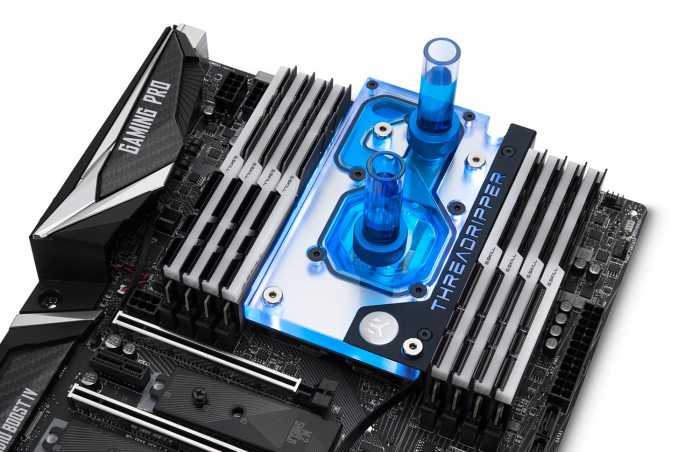
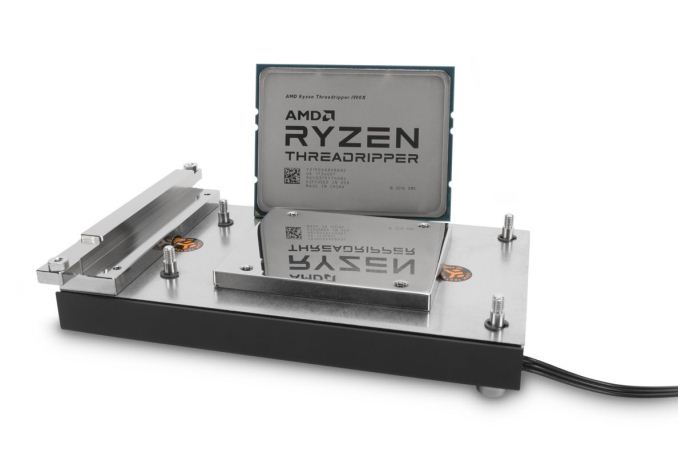
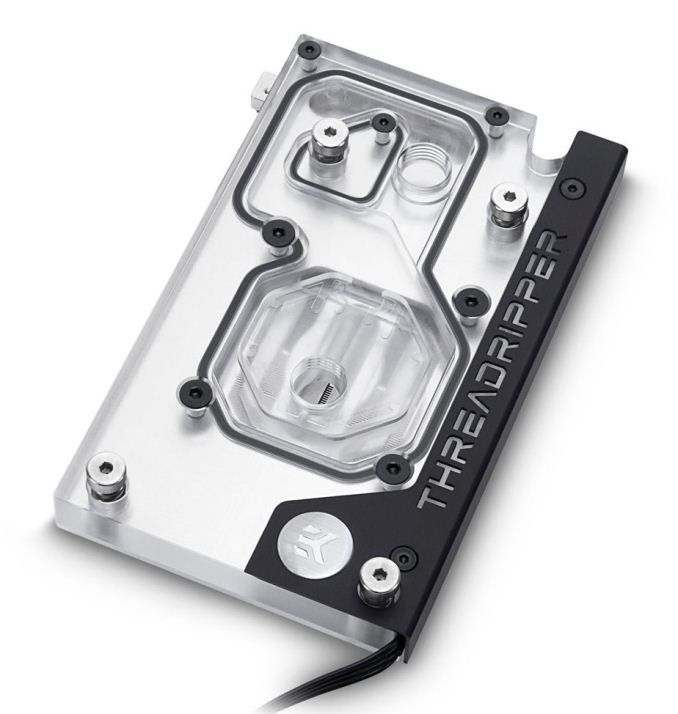
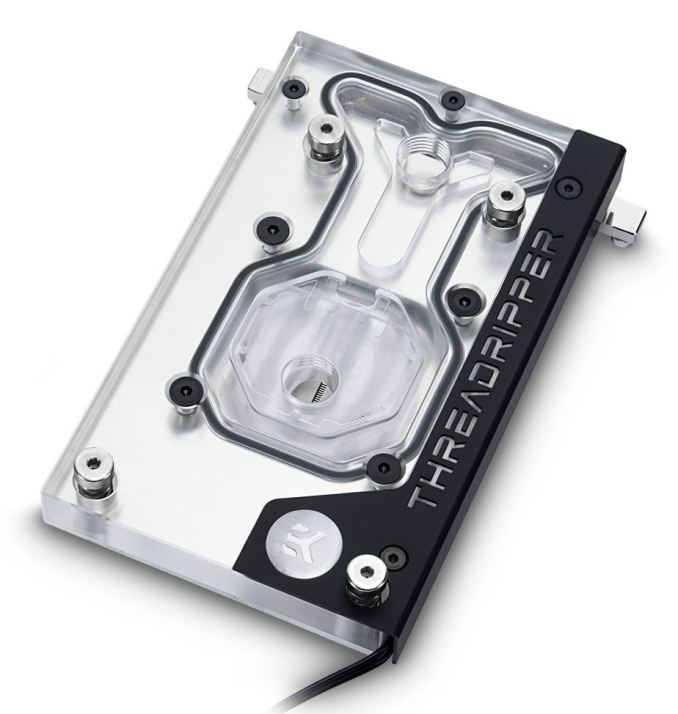
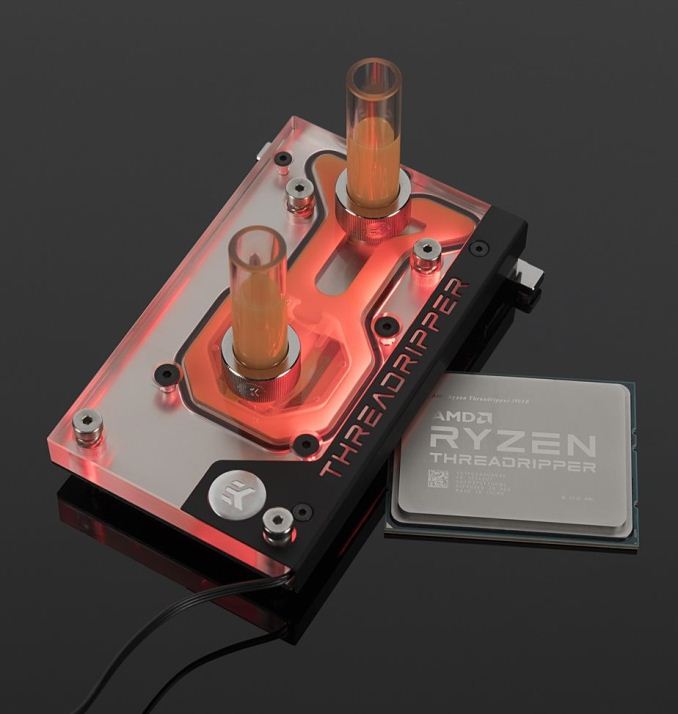

 Quote
Quote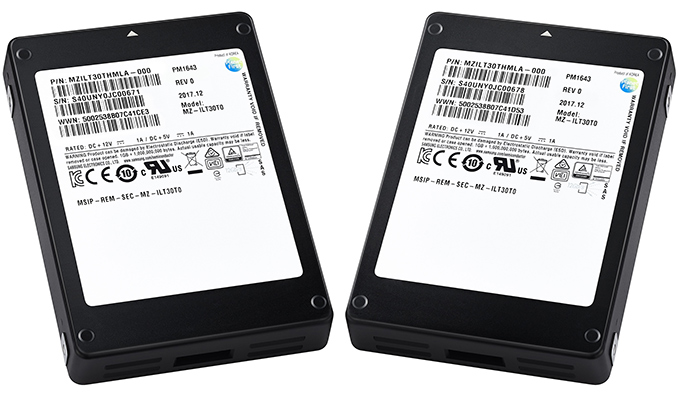
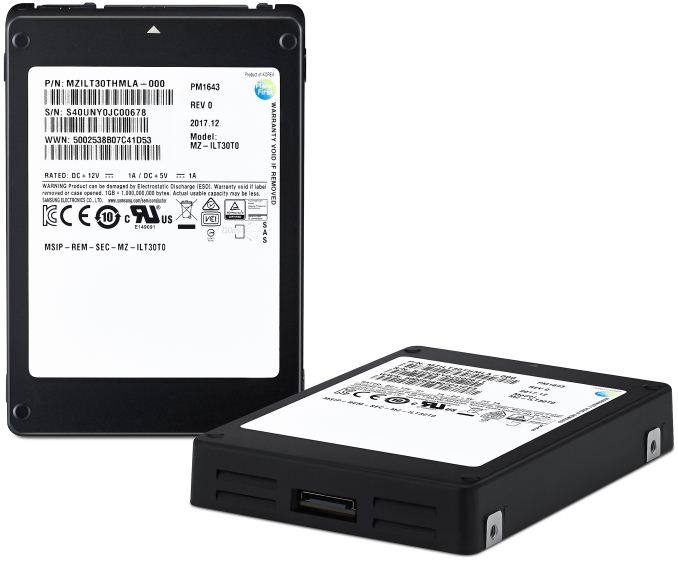


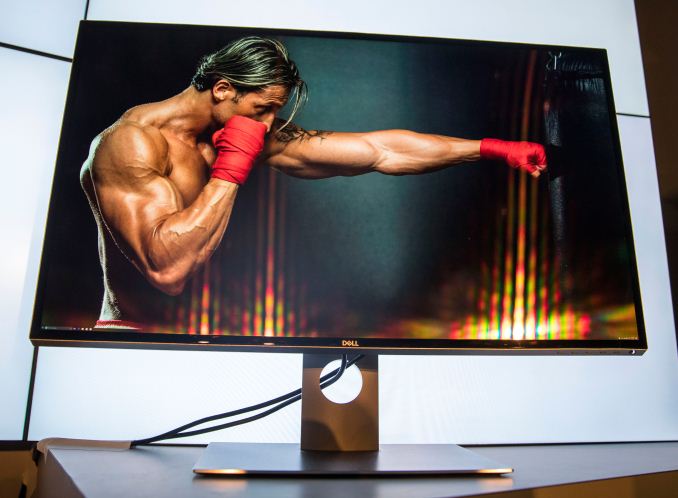
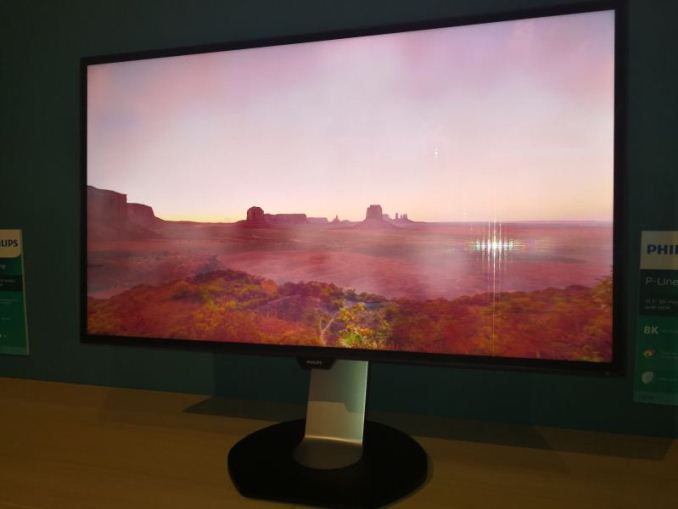
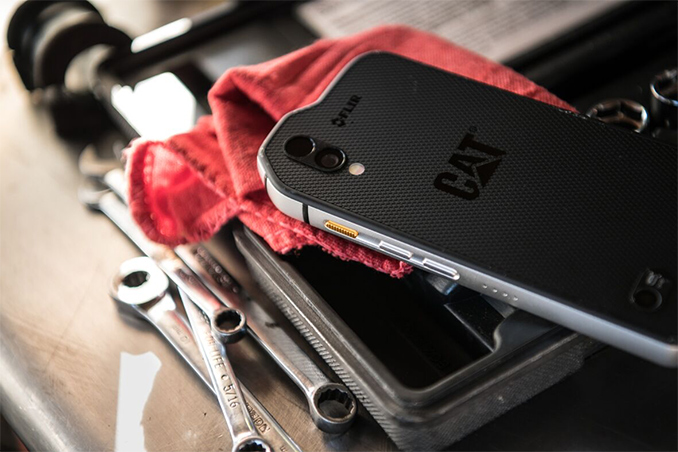
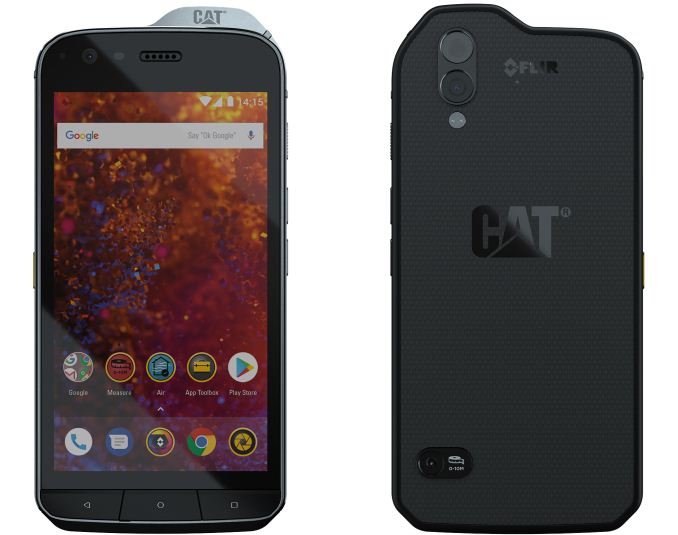
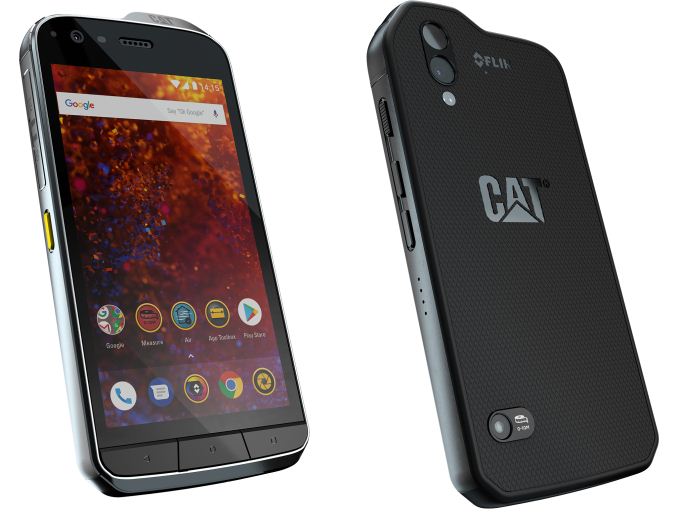

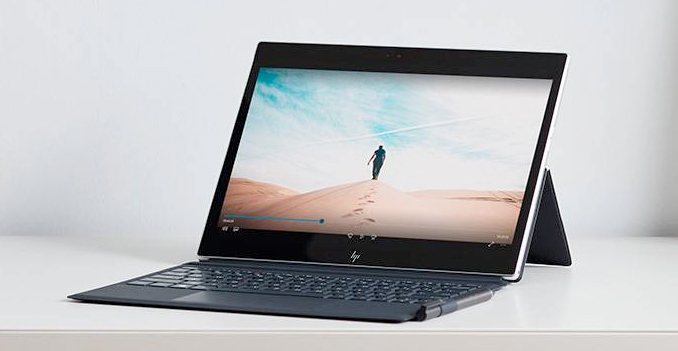
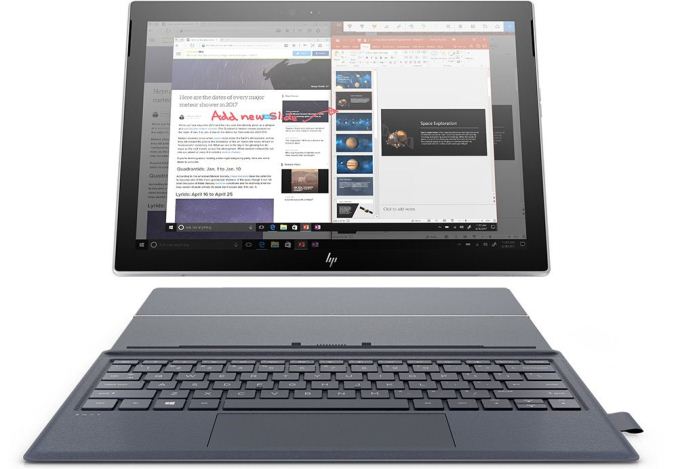


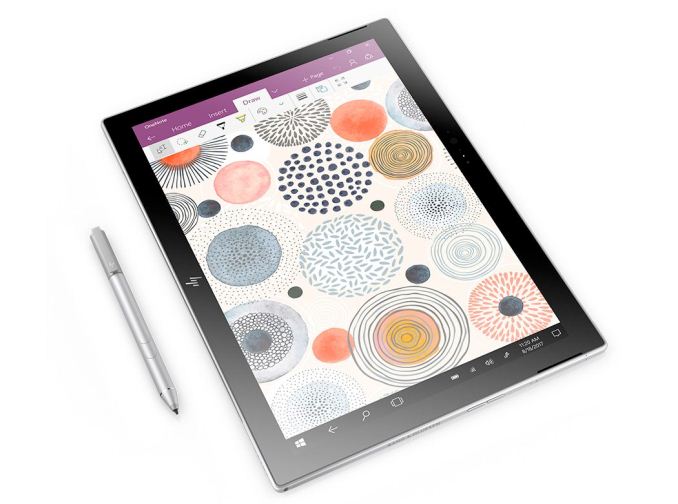
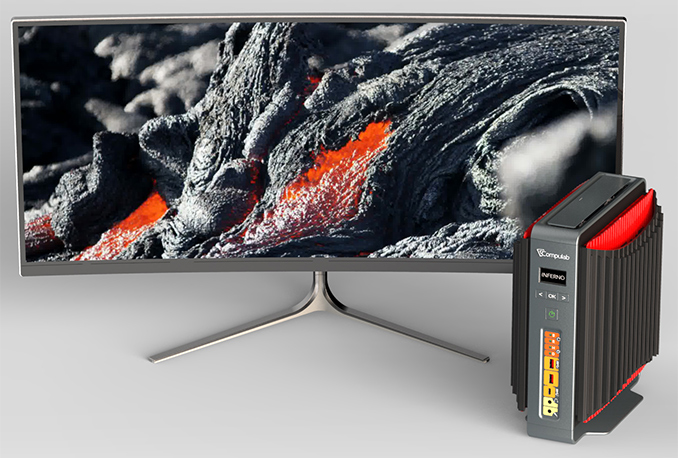
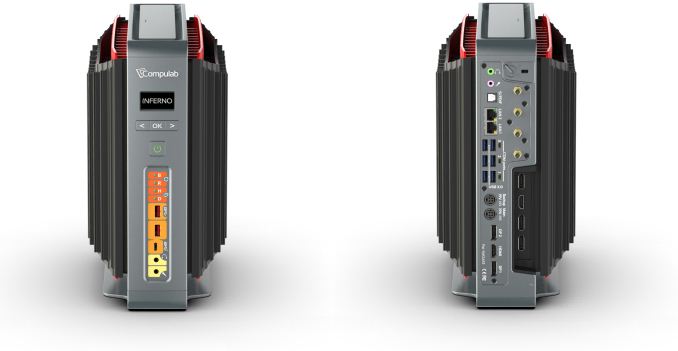
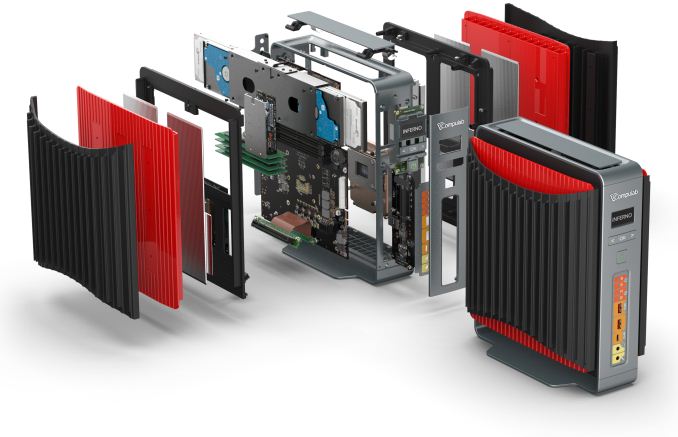
















Bookmarks